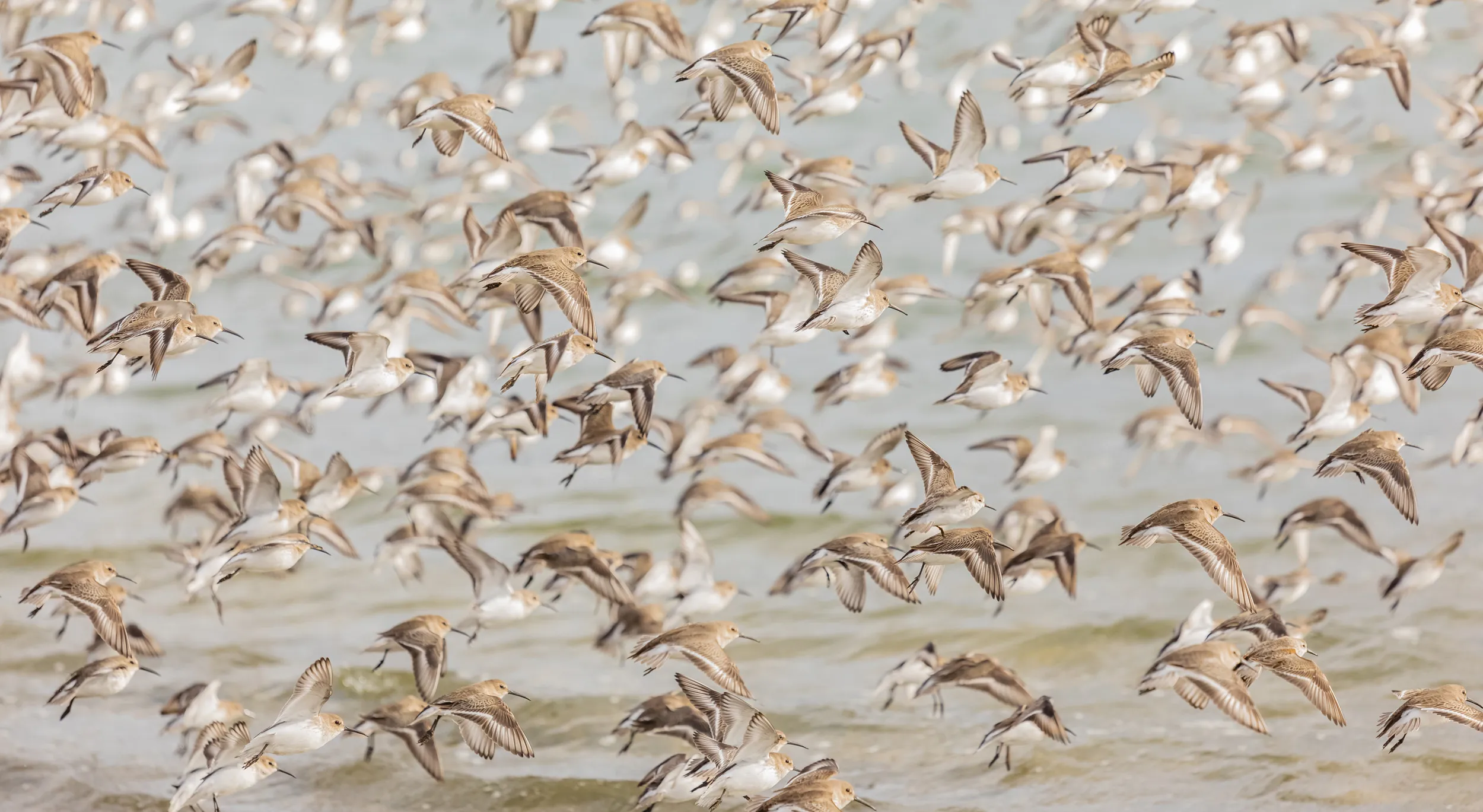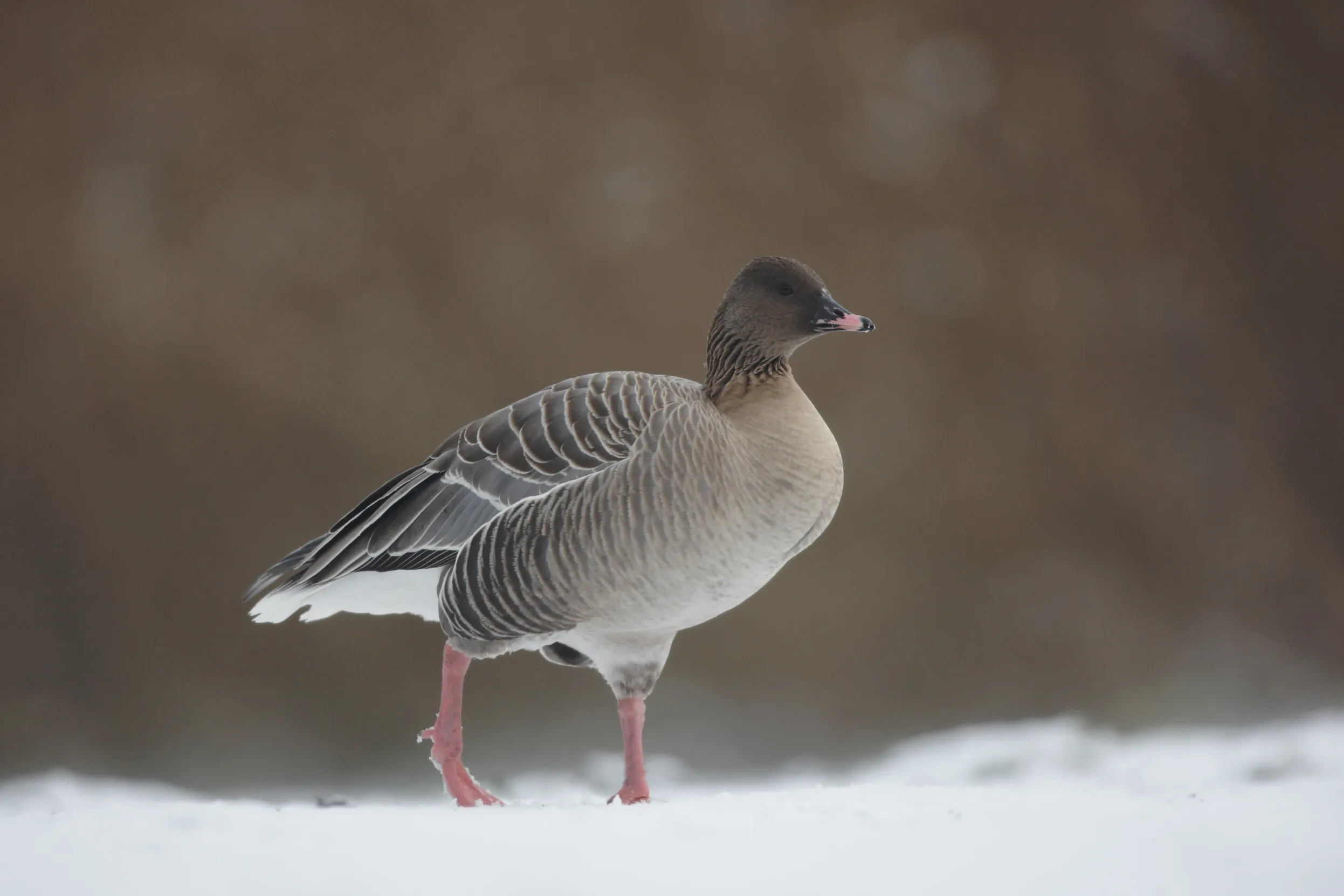News
North Sea collision: fears for impact on seabirds and other marine life
Area around crash site is an important wildlife site, including internationally important populations of seabirds.
As masses of migratory birds arrive in the UK, it’s a timely reminder conservation needs to be both local and global.

With the changing of the seasons, comes the changing of the birds. Summer visitors such as Swallows, House Martins and Swifts are now gone from our skies, heading south to find food and warmth. Meanwhile millions of winter visitors flock here from the north and east. For many the wetlands and estuaries around the UK are their goal. Why? For the rich, oozy mud, packed with food to feast on throughout the winter. With the UN’s Biodiversity Conference – or COP 16 – just around the corner, the autumn migration is a timely reminder about the need for action on a local and global scale if we’re truly going to help our wildlife thrive.
The muddy estuaries, mudflats and marshes along England’s east coast, from the Humber to the Thames, can look a little bleak. But look closer and you’ll see they’re bursting with life. Within the rich mud lives a huge variety of creatures such as worms, shellfish, crabs, small fish and other marine minibeasts. Many waders such as Curlews, Godwits, Oystercatchers, Knots, Dunlins, Grey Plovers and Redshanks specialise in hunting out these tasty morsels, each with a differently shaped bill to delve and probe into different depths of mud. Ducks, geese and swans also visit to find green algae, seagrasses and saltmarsh plants to feed on.
Although these muddy places are great for nature all year round, in winter they really come into their own. Guy Anderson, one of the RSPB’s experts on bird migration, said: “The UK is relatively mild, warmed by the North Atlantic currents, so we don’t get very cold in winter. This means our seas and rivers don’t freeze over which allows the mud and the food within it to remain accessible for birds all through winter.
“So what you see is this massive funnelling down of birds coming from breeding grounds in Arctic Canada, Greenland, Iceland, Scandinavia and as far east as Siberia. If you look at the map, we get birds visiting from an absolutely huge area, spanning more than half the Arctic world.”

Our winter visitors arrive here by travelling along part of the East Atlantic Flyway, one of several flyways used by migratory birds around the world. This motorway of the sky is used by millions of birds and runs from Siberia in the north to South Africa in the south. The muddy estuaries, bays and marshes along England’s east coast as well as the freshwater wetlands nearby are a key part of this flyway and a stop off for many mud-loving birds.
Guy said: “Think of each of them as a snack-filled motorway service station which birds use along their huge migrations north and south. Individually they’re important but their real value is in their sum. That’s why we can’t only look at them one by one. You must look at them on a bigger scale – they’re part of a connected network of sites along the whole flyway. When you think of them like this, their global significance becomes clear.”
Because of their huge importance to our migratory birds, the RSPB is working with partners such as The National Trust and the Wildfowl and Wetlands Trust to try and get many of our best coastal wetlands along England’s East Coast recognised with UNESCO World Heritage Site status. This is the kind of security and recognition enjoyed by the likes of the Taj Mahal, the Serengeti and Yellowstone National Park. At the moment, all the key coastal wetlands along England’s East coast from the Humber south to the Thames, as a single unit, are on the World Heritage Site tentative list.
Guy said: “The power of these sites is in the collective. Together, millions of birds depend on them, and need them to survive. That’s why they’re so important and deserve the highest level of recognition.”
The East Atlantic Flyway crosses many countries and is just one example of why we need both a local and international approach to protecting and restoring our wildlife.This is why the RSPB works with partners like BirdLife International, to take cooperative international action.This includes science and monitoring, site and species management in key areas, education and influencing government action, including through international agreements.
Just as millions of birds are travelling the globe on their autumn migration, thousands of decision makers and advocates will be flocking to Cali, Colombia, for COP 16, the UN’s meeting focused on the biodiversity crisis and how to reverse the loss of nature. At the last meeting, COP 15, delegates from around the world came together in a landmark moment to adopt a global framework for nature’s recovery, known as the Kunming-Montreal Global Biodiversity Framework. This was brilliant news and is a solid basis for action to halt and reverse the loss of nature by 2030. If effectively implemented globally it could genuinely turn the tide of nature loss.
COP 16 is a chance to shine a spotlight on how countries are taking action, and to ramp up momentum. We’ll be calling on the UK government to show leadership – the countries of the UK are some of the most nature-depleted in the world and at the moment the global nature crisis continues to worsen. The UK (including all four countries and many of the UK Overseas Territories) has signed up to ambitious global targets for nature. We’ll be at COP 16 calling on the UK Government to turn its global promises into real action at home.
Ahead of COP 16, our friends at BirdLife International are calling for us all to share our hopes for the future. Together, we can show decision makers that people across the globe are united to protect nature.